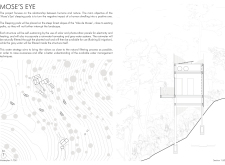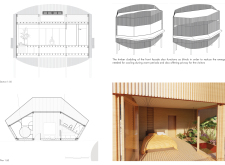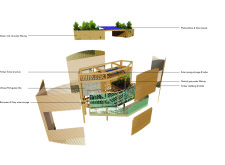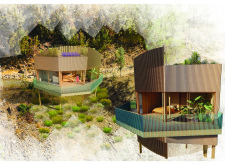5 key facts about this project
The 'Mose's Eye' project presents a thoughtful approach to connecting human living spaces with the natural world. Located on the steep slopes of the Vale de Moses, the design features self-sustaining sleeping pods that aim to enhance the relationship between people and their environment. The concept is rooted in environmental responsibility while offering visitors a comfortable and immersive experience in nature.
Design and Sustainability
The sleeping pods are carefully placed to avoid disrupting the existing landscape. They utilize paths that are already in place, respecting the natural terrain and its ecological balance. Each pod is equipped with solar and photovoltaic panels, which provide energy for lighting and heating. This setup allows the pods to operate independently and emphasizes the commitment to sustainable living.
Water Management
An important part of the design involves rainwater harvesting systems. Rainwater is collected and filtered through the green roofs, which serve practical purposes like irrigation and flushing. This strategy not only meets essential water needs but also helps visitors understand the importance of sustainable water use. It reinforces awareness of natural filtering processes, encouraging a deeper respect for local ecosystems.
Materiality and Aesthetics
Timber forms the cladding of the sleeping pods, combining function with visual appeal. This material offers privacy to occupants and acts as a passive cooling system when temperatures rise. The inclusion of unique Portuguese tiles further enhances the aesthetics of the structures, tying them to the cultural context of the region while maintaining overall coherence in design.
User Experience
The arrangement of these design elements fosters an engaging environment for those staying in the pods. The spaces are designed for comfort while remaining sensitive to ecological considerations. Visitors experience the peace of the Vale de Moses and can reflect on sustainable practices during their stay. The architecture encourages a profound connection with nature, allowing occupants to feel at home within their surroundings.






















































